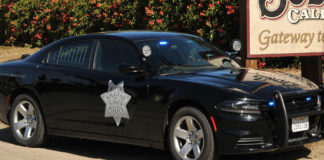
Six-hundred-dollar checks. Universal prekindergarten. Forgiveness for back rent, traffic tickets, utility bills. Big investments in the electrical grid, broadband, wildfire prevention, drought mitigation. Tax breaks for small business and Hollywood.
Flush with a huge surplus and threatened by a campaign to recall him from office, California Gov. Gavin Newsom last week proposed a state budget that was the government equivalent of that time everyone in the studio audience got a Pontiac on Oprah. This week, state legislators took up the $267.8 billion plan.
With a mid-June budget deadline and Newsom’s fellow Democrats dominating the Legislature, the broad priorities are unlikely to change much. Still, like all those free cars, it’s a lot to process. Here are a few things to know:
This budget is about both the recovery and the recall.
Newsom has been in campaign mode for months, since it became clear that the Republican-led recall effort would most likely lead to a special election. Polls show that an increasing majority of voters disapprove of the recall. But he’s still in a vulnerable position with lawmakers and lobbyists.
Last week’s budget rollout was a cavalcade of photo ops for big-ticket line items: Rebate checks of up to $1,100 on Monday for middle-income Californians; historic spending on homelessness Tuesday; an expansion of preschool to all 4-year-olds Wednesday; a major small-business grant program Thursday.
For the teachers unions that helped elect him, the governor proposed a record $14,000 in per-pupil school funding. For parents furious that more than half of the state’s public school students remain learning remotely, that funding was contingent on an in-person return to classrooms.
Progressives who get out the vote for Democrats in California elections got repayment of billions of dollars in back rent and utility bills for low-income renters, funding for pilot universal-basic-income programs, and forgiveness of some $300 million worth of traffic tickets for low-income drivers. Newsom also proposed extending Medi-Cal to workers older than 60 who are in the country illegally and significantly expanding housing for homeless Californians.
Businesses have already received a $6.2 billion tax cut. But the governor also proposed hundreds of millions of dollars in incentives for companies to relocate to California, for tourism marketing and for tax credits to lure filming back from, he said, “places like Georgia whose values don’t always align with the production crews.”
It is also about record revenue.
State officials expected the virus to be devastating. But they overestimated the economic damage to skilled workers and underestimated the flood of money that would arise from the booming stock market. Now the state’s progressive tax system, which relies heavily on the well-off, has delivered about $100 billion more than had been projected. The Biden administration’s stimulus plan also channeled some $27 billion in federal aid to the state.
All but about $38 billion of that revenue, by law, must go to public schools, various budget reserves and other obligations. Some, too, must be rebated to taxpayers by mid-2023. The governor’s proposal included some $11 billion to pay down the state’s long-term liability for public employee pensions. And he took some heat from an independent state analyst Monday for holding onto about $8 billion he had pulled from cash reserves last year, instead of repaying it.
Still, the situation is a far cry from 2003, when the dot-com bust and tight state budgets fueled the recall of Gov. Gray Davis, said Rob Stutzman, a Republican political consultant.
“Politicians rarely lose when they’re handing out money,” Stutzman said. “And the state is just flush with cash.”
It also may reflect a new resolve about government spending.
Raphael Sonenshein, the executive director of the Pat Brown Institute for Public Affairs at California State University, Los Angeles, regards Newsom’s proposal as part of a new embrace of government largess in the Democratic Party. Gone, he said, is the split-the-difference frugality of, say, Gov. Jerry Brown.
“Partly it’s the country coming out of the pandemic, and partly it’s what is coming out of Washington, D.C.,” he said. “But states — and not just California — are in a position not to just repair but to even reverse the decline in the social safety net. And that’s a big deal.”
President Joe Biden’s New Deal-inspired plans to help the nation recover from the pandemic have paved the way for sweeping state-level proposals such as Newsom’s, Sonenshein said. So has the sense among financial experts that government could and should have intervened more aggressively to head off the Great Recession in 2008.
“I think the hold of austerity politics has been so strong for so long that people didn’t question a lot of the orthodoxy. But that has changed,” he said.
Copyright 2021 The New York Times Company













